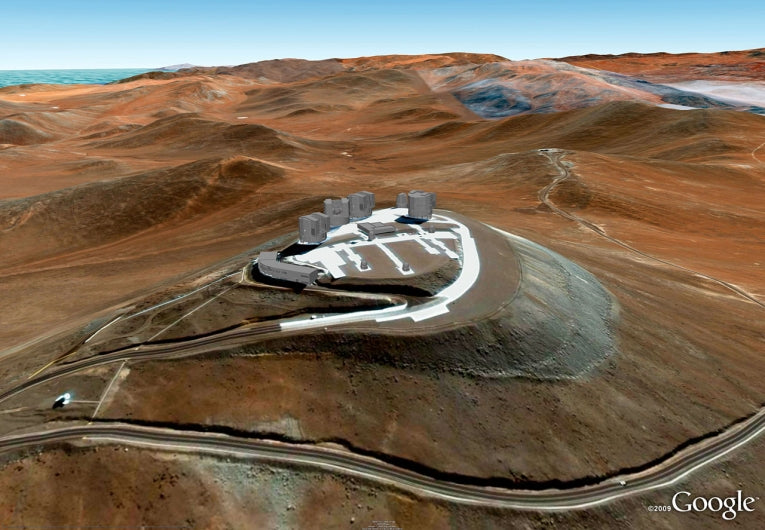TheVery Large Telescope array (VLT) in Chile is owned by the European Southern Observatory (ESO), the most advanced intergovernmental agency in astronomy. Fifteen countries contribute to its dramatic advances .(Austria, Belgium, Brazil, the Czech Republic, Denmark, France, Finland, Germany, Italy, the Netherlands, Portugal, Spain, Sweden, Switzerland and the United Kingdom).
It has almost outdone itself recently with researchers time-travelling back to 1 billion years after the Big Bang. Up to that time neutral hydrogen fogged the view of early events in the young galaxies as they "reionised". This age of reionisation now has a timeline, after a three year search with the VLT for distant galaxies at this stage of development.

This artist's impression shows galaxies at a time less than a billion years after the Big Bang, when the Universe was still partially filled with hydrogen fog that absorbed ultraviolet light. New observations with the ESO Very Large Telescope are probing this important phase of the early Universe by studying the light from some of the most distant galaxies ever detected.
Credit: ESO/M. Kornmesser
Adriano Fontana who led the project, says, "Archaeologists can reconstruct a timeline of the past from the artifacts they find in different layers of soil. Astronomers can go one better: We can look directly into the remote past and observe the faint light from different galaxies at different stages in cosmic evolution." He measured emission lines such as the Lyman-alpha line for hydrogen.
These lines show which elements are present because of their bright, characteristic colours. Five very distant galaxies indicated hydrogen, allowing the team to measure both how far away they were, using their red shift, and then how long after the Big bang they could be seen. The order of these five then produced a timeline of how their light evolved over time. (Red shift is simply how far the line had been moved towards the red end of the spectrum, just the same as a Doppler effect).
ie. GALAXY 1 >GALAXY2 >GALAXY3 >4 >5
time since the Big bang -------------------------------------------

Distant Galaxy via Shutterstock
Laura Pentericci, who also works in the INAF Rome Observatory with Adriano, explained, "We see a dramatic difference in the amount of ultraviolet light that was blocked between the earliest and latest galaxies in our sample. When the Universe was only 780 million years old neutral hydrogen was quite abundant, filling from 10 to 50% of the Universe' volume." Then, it seems, 200 million years later, the hydrogen dropped very low in level, rather like today's concentrations. The loss of this neutral element, producing ionised hydrogen, means that the age of reionisation occurred much earlier than had been thought.
UV light was necessary for the great reionisation, but where had it originated? Indications are that the very first stars to form must have emitted it. "Five thousand times younger and one hundred timed larger than the Sun," Eros Vanzella states, indicating how they may have been able to dissolve away that primordial fog and allow light to pass. The forthcoming ELT (Extremely Large Telescope) will be able to produce the accurate measurement needed when it is complete in ten years time.

Image of a black hole via Shutterstock
An alternative theory of course is that radiation emitted by matter falling towards black holes could create enough UV light for the age of reionisation. The galaxies await our answers.










